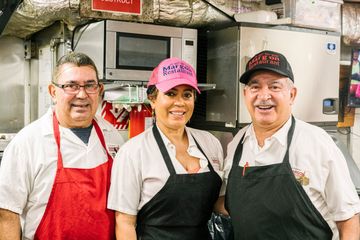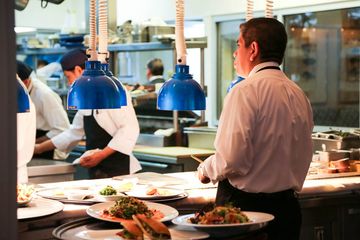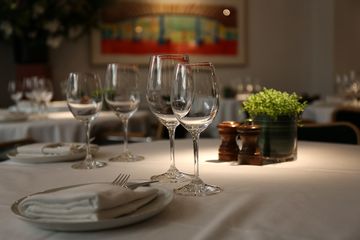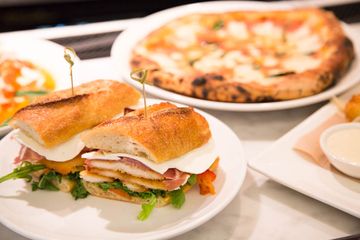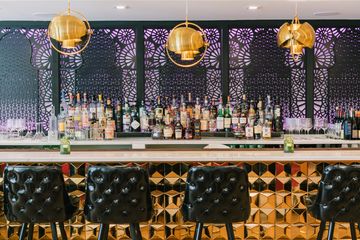Saar, which translates to “the essence of something, ” has a double meaning for Pastry Chef Surbhi Sahni. It represents the essence of Indian food, as well as the essence of her relationship with her husband, Chef Hemant Mathur. Although Surbhi has been in the industry with Hemant for years, the two have not worked together on a daily basis since their days at their Michelin-starred restaurants, Devi and Tulsi, both of which are now closed. Saar represents their fresh start while also staying true to their culture and roots. When Surbhi and Hemant met in 2000, Hemant was teaching Indian cooking classes at New York University as he was getting ready to open Tamarind on Park Avenue. Surbhi joined the opening team at Tamarind, designing the tearoom and promoting quick lunches. He went on to operate five different spaces, including Sahib, Haldi, Chote Nawab, Malai Marke, and Chola, while Surbhi helped manage events. During that time, she also launched Bittersweet NYC, a pastry business focusing on wedding cakes and Indian style desserts for larger corporate events. Surbhi’s relationship with cooking is unlike the typical love story of most chefs. Her experience in the kitchen started at the age of ten in New Delhi as more of a responsibility and chore when her mother’s health declined. She explained to members of the Manhattan Sideways team, “It was not something I could ever imagine myself doing for the rest of my life. I wanted to do art and write and paint or sing and dance - every other activity in the world but cook. ” Notwithstanding these sentiments, Surbhi was encouraged by her father to take a job in hotel management in New Delhi. She was part of the Sheraton Group’s revolutionary all-female kitchen and restaurant at a time when there were only approximately twenty female chefs in all of New Delhi. At age twenty-five, however, Surbhi chose to move to the United States to pursue her Masters in Anthropology and Food at New York University. Despite never getting to study writing and painting at university, these endeavors have always been an integral part of Surbhi’s life. Her father is an accomplished artist exhibiting in both India and the US. Today, she is proud of her own teenage daughter, Soumyaa. "She is the true artist of the family. " When entering the dining room on 51st Street, Surbhi’s artistic aptitude is obvious. The modern space is both clean and dramatic, with natural light and bright pops of color. Saar was a particularly exciting project for her, as she was given free rein in its design. In a mere five months, she turned what she described as a dingy, confused room into an open, tasteful dining space. Saar has also allowed Surbhi and Hemant to completely reinvent their menu. They focus on regional food, staying authentic to the specific flavors of each area. For example, Surbhi told us that the Turbuj Pachadi - a tomato and watermelon salad with a fennel and ginger dressing - is a Rajasthani staple, as watermelon is a fruit that is readily available there, and is usually consumed with freshly baked bread. She has also made an effort to challenge conventional conceptions of Indian cuisine. The Mango Coconut Soup is a light and sweet palate opener, proving that Indian food is not always too spicy or a combination of too many flavors. She believes that Indian food is actually very demarcated in the way flavors are put together. “Just how in Japanese food they have many different layers of flavors they add as they’re cooking, we do the same with Indian food. ” While cooking can serve as a creative outlet, Surbhi still tries to write and paint whenever she can. In ending our conversation, Surbhi emphasized the importance of food’s role in building a community - something she looks forward to creating on West 51st Street.
